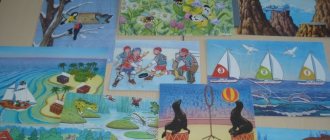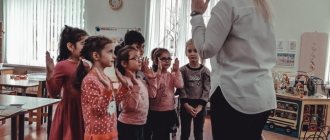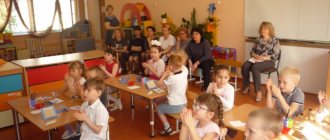Hello dear readers and blog subscribers! Today I will tell you what lip exercises there are for children and what role they play in improving diction. You've probably noticed how difficult it can sometimes be to understand a person. When he speaks, almost without opening his mouth or his lip line (D) is slightly slanted, one corner of his mouth is higher than the other. This could be either a symptom of some neurological pathology or malocclusion.
Diagnostics
This should be addressed to the appropriate specialists, a neurologist or an orthodontist. We will talk about how to make sure that this does not prevent us from speaking clearly and understandably. Let's start with the fact that articulation exercises for G are closely related to gymnastics for the cheeks and various breathing exercises. And also with a massage of the muscles of the mouth and surrounding areas. If the muscles of the upper and lower G have impaired tone and do not close well, then it is difficult for the child to even blow a piece of cotton wool from the palm of his hand.
That is, the air stream does not participate in the formation of sounds, speech is very poor and often spontaneous. Tension G leads to tension in other muscles: the tongue and cheeks. Therefore, when examining a child, the speech therapist attaches great importance to the child’s skills in controlling the air stream. The baby is asked to blow in at least 3 ways:
- blow through closed lips, sound like “pfft”
- purse your lips like “fff”, blow like a dandelion
- with mouth slightly open, as if we want to warm our hands “xxxxx”
At the same time, we observe whether the Gs close, whether they fold into a tube, whether the cheeks puff out. Very often, children cannot blow at all, this happens with an incorrect bite, when the teeth do not close, with dysarthria, the air spreads into the cheeks and they puff up, very weak exhalation with adenoids. If there are no back-lingual sounds, G-K-H, then the sound produced is not “xxx”, but something like “tss”.
It happens that a child can somehow blow. But at the same time, the stream of air is so unfocused that it is impossible to blow out a soap bubble or make a “whoa.” And besides, the result is not a “tube” with the tongue, but something similar to a pig’s snout. When the baby tries to smile, there is a curvature of the line of the mouth, one corner is higher, the other is lower. If you take a closer look at the nasolabial folds, you will notice their smoothing and asymmetry.
Exercises for the lower jaw
Tasks for the lower jaw help to develop the mobility of the articulatory apparatus. It is advisable to perform the exercises at a slow pace, tensing the facial muscles. If you need to pronounce vowels, pronounce them emphatically clearly. At the initial stage, help your child count out loud to hold the pose for the required time.
Chick
Before starting the task, agree with your child on a fast rhythm of work; do the exercise at a good pace.
The child should open his mouth wide, pulling the corners of his lips. You can't stick out your tongue. After holding the pose, the lower jaw quickly slams shut.
Shark
Main goal: practicing jaw movement in different directions. First, the mouth opens, then the jaw moves according to plan: to the right - returns to its place - left - down - forward - up (mouth closed, lips closed). Sudden movements should not be made to avoid dislocations and injuries. The rhythm of completing the task is counted by the teacher.
Monkey
You need to open your mouth as much as possible, pull your lower jaw towards your chest. The tongue simultaneously reaches towards the chin.
Strongman
Open your mouth wide. Imagine that a weight is tied to your chin and you need to lift it with the strength of your lower jaw. We close our mouth slowly with effort, tensing the muscles of the face.
Early corrective work to eliminate dysarthria can give good results if the parents and the patient himself are committed to success. Full restoration of speech is possible only if the form of the disorder is erased; in other cases, it is only possible to achieve an improvement in the condition. However, even such a result will have a positive impact on the child’s socialization and the level of mastery of literacy skills at school.
Types of articulatory gymnastics
All these are signs of neurological abnormalities. Neurology can be quite mild, the baby is not registered at the clinic, but it can interfere with the formation of full speech. Articulation gymnastics will help correct this; it should be done regularly, combined with breathing, voice and speech therapy massage. Gymnastics can be active and passive, static and dynamic. Let's consider all these types, in combination with breathing and massaging.
With passive gymnastics, the child cannot complete the task on his own; an adult helps him. He takes it G with his fingers, stretches them or, on the contrary, collects them into a tube, closes them and performs other necessary actions, gradually teaching the child to do this himself. In this case, there should be support for the visual analyzer in order to control the process; it is advisable to do everything next to the mirror.
Combination and sequence of different types
The sequence is as follows: an adult and a child sit in front of a mirror, the adult points to himself, asks him to repeat, if the child does not succeed, the adult does it for him with his fingers, then the child tries to do it himself, and then tries to do it without using his hands. This is already active gymnastics, maybe not right away, periodically helping with your fingers. The main thing is not to rush, the execution must be precise and correct, so that later you don’t have to relearn.
Passive gymnastics is closely related to massage, or rather, massage smoothly flows into passive gymnastics. You need to clearly know that all exercises must be performed by first relaxing G. You cannot do them with tightly closed, tense muscles. And there will be little use and the child will experience discomfort and negativity, and may refuse to study altogether.
To begin with, it is advisable to teach your child to feel the difference between tense and relaxed lips, to tell him: “You feel how pleasant and good it is when your lips are soft, how beautiful they are.” Fix his attention that when the Gs are tense, they are thin, pale, and when relaxed they are bright, “bow-like”. When making sounds, it is very important that neither the jaw nor the lips tense. The mouth was wide open, otherwise it would be very difficult to work on correcting phonetics.
During static gymnastics, Gs are held in one position for some time, for example, counting to 10. The “tube” exercise is performed, the children hold it, and you count. And so several times, then “fence” and again keep in this position. With dynamic gymnastics, on the contrary, there is an active work of G, “fence - tube”, you need to work G, either stretching them and showing your teeth, or pulling them forward into a tube, also counting in several steps.
Move on to dynamic gymnastics when each exercise has already been practiced, is automated, and the child does it flawlessly. It is allowed to help with your hands, if a malfunction suddenly occurs, it can be combined with voice gymnastics, pronounced with a tube U, and with a fence I at different tempos, sometimes quickly, then slowly, then quieter, then louder, then in a thin voice, then in a “thick” one.
Recommendations for conducting classes
Pronouncing sounds correctly only seems like a simple task. A child with impaired motor functions of the tongue, lips, and cheeks cannot do this easily. Organ dysfunction and immobility interfere. Articulatory gymnastics is aimed at training speech muscles, practicing specific positions of all elements of the apparatus, and consolidating the skill of clear speaking.
To make speech therapy sessions using gymnastics more effective, you cannot do without the recommendations of professionals:
- You need to practice 3-4 times daily for 5 minutes so that the skill is thoroughly consolidated. At the initial stage of correction, offer your preschooler no more than 3 different exercises per day.
- One task is performed 5-7 times.
- Hold the pose for 10-15 seconds.
- When drawing up a lesson plan, follow the rule: from simple to complex.
- Start the lesson with lip exercises, then start training your lips, cheeks and tongue.
- Use a mirror so that the child can see his own face in the reflection and control the completion of tasks independently.
- During the lesson, the child should sit with a straight back and relaxed limbs.
- Move on to new exercises after practicing the material already proposed. If you have difficulties, it is better to stop and additionally repeat poorly learned organ poses.
- Conduct classes in a playful, emotional way. You cannot put moral pressure on your child or force him to study.
Articulatory gymnastics of classical types is suitable for correctional work with preschoolers diagnosed with erased dysarthria. But special attention in such classes should be paid to the organization of the kinetic basis of movement (sensations).
A set of exercises to correct dysarthria includes several blocks. This is a workout for the lips, cheeks and lips at the same time, as well as tasks for working with the lower jaw. The set of games for speech muscles for each block of the lesson will naturally be different.
Static exercises of articulatory gymnastics
- tube with lips, also called “trunk” or “elephant”, lips stretch forward, as when pronouncing the sound U
- fence, open smile, show teeth, as when pronouncing the sound I
- closed smile with just lips
- the house is open, also called “window”, open your mouth wide - “open the window in the house”
- the house is closed - lips together, pressed tightly
- lock, cover the lower lip with the upper lip, which is pulled slightly into the mouth
- key, on the contrary, lower upper
- Whoa, close your lips, stretch them forward slightly and make a vibrating sound
- show your upper teeth, raise your upper lip and show your upper teeth
- show your lower teeth, lower your upper lip, pull back your lower lip
- snout, pull your lips forward, widen them slightly
- mouthpiece, also called “window” or “donut”, lips as when pronouncing O
Tongue exercises
Articulatory gymnastics for the tongue with dysarthria includes a set of exercises that will help cope with the immobility of the body and the tip of the organ. To correct a speech defect, a child must learn to spread his tongue, freely relax and tense it, depending on the speech situation.
Pancakes
The tongue is well relaxed and spread out. Placed on the lower lip. Then you need to slap your tongue, saying “five-five-five.” In this case, the lower lip should not be tucked. Be sure to ensure that the student’s breathing is even.
Spatula
The child’s task is to relax the body of the tongue well and place it on the lower lip. You cannot strain your organs for 10-15 seconds.
Cup
The mouth opens wide. The edges of the tongue are folded inward; the incisors cannot be touched. Invite your child to imagine that water is poured inside the resulting container (“cup”) and to hold it gently, without spilling it.
Needle
The tongue tenses and extends forward from the mouth like a sting.
Slide
The preschooler rests the tip of his tongue on his lower teeth, arches his back, and his mouth can be opened wide.
tube
The child opens his mouth, the tongue moves slightly forward, the side edges curl up.
Fungus
You need to open your mouth wide, suck the tip of your tongue to the upper palate. If it is difficult to maintain the position on your own, help with your fingers first.
Dynamic gymnastics for children
- fence - pipe (frog - elephant)
- open and close your mouth, slap your lips, making a soft sound
- “air kiss”, we stretch our lips forward (as for a kiss) - then we retract our cheeks so that the corners of our mouth touch, like a fish’s
- bite the upper lip, then the lower, “comb your lips”
- smile - tube
- the house is open - closed, close your lips, straining them, open your mouth wide, relaxing, show first the upper lips, then the lower ones, then all at once, a fence
- make faces - move your jaw left and right
- snout - tube
- window - house open - tube - fence - O - A - U - I
- charge for the trunk, twist the tube clockwise and counterclockwise, up and down, left and right. Look at the elephant, how it moves its trunk.
A set of lip exercises
The purpose of the set of tasks for working with the lips is to relax the muscles, normalize the tone of the tip and body of the tongue. The exercises help develop diction, so they are suitable for correcting all forms of dysarthria, including erased ones. We recommend playing with children under 7 years of age.
Smile
The child smiles, stretches the lip muscles as much as possible, but does not open them. The teeth are not visible.
tube
The lips are folded into a pipe and extended forward. The preschooler should feel the tension in the muscles around the mouth.
Fence
The mouth stretches into a wide smile, the teeth are clenched in the correct bite. The jaw is clearly visible from behind the lips.
Bagel
The exercise is similar to the Tube task, but you don’t need to stretch your lips long. The child folds them roundly so that his teeth are visible and slightly puts his lips forward.
Fence-Bagel-Smile-Proboscis
Invite your child to slowly alternate several poses, holding one exercise for 15 seconds. Repeat the complex 5-7 times in a row.
Smile-Tube
Perform the exercise rhythmically, clearly, at the teacher’s expense. First, the child stretches his lips in a smile without showing his teeth, then folds his lips into a tube and holds the pose for 15 seconds. Then he returns to his smile. Repeat the complex 5 times.
Fish
Show your preschooler a video of fish “talking” in the water. He must repeat their movements with his lips: clap against each other and say nothing. The exercise is performed slowly at the initial stage, then the pace accelerates.
Kiss
The child strongly pulls his cheeks inward, then quickly opens his mouth and clicks his tongue and lips. There will be a sound similar to a kiss. This exercise is suitable for warming up before a set of cheek training tasks.
Gymnastics in a playful way
Breathing games go well with these exercises. The kid doesn't want to study, let's play. He doesn’t want to close G, so we blow the cotton wool off his palm and show him how fun it is to do “pfft,” as if a butterfly had fluttered from his palm. You need to lift the lower G up - put some cotton wool on your nose and blow from your lower lip. The horse gallops, we click our tongue and then it stops, “trrrr”, it doesn’t work, we play on our lips like a balalaika.
The game with soap bubbles goes well. It’s very fun to watch them fly, shimmering with rainbow stains. “Now blow it yourself!” - tell the baby. It may not work out right away, it’s okay, encourage the child. Take turns blowing with him, he either catches them with his hands or blows. You can also move your hand around the ring and the bubbles will also fly away.
Toys such as a harmonica, a pipe, a whistle, and various pipes and whistles can also help. as well as inflating balloons. Of course, this requires more complex skills, well-trained G muscles, the ability to hold a toy with your lips and at the same time draw in air and exhale without releasing the object from your mouth. Therefore, it’s okay if at first the pipe falls out along with the exhalation, and air is drawn in from the ball, this will work out over time.
Exercises for lips and cheeks
The purpose of this block of exercises is to tone the muscles of the lips and cheeks at the same time, normalizing the outflow of blood from the articulatory organs. Before starting the tasks, it is recommended to rub the inside of your cheeks with your tongue, bite, and pat the outside of your face with your palms.
Well-fed hamster
The child inflates both cheeks, then each one in turn, and holds the pose for 10-15 seconds.
Hungry hamster
The preschooler strongly draws his cheeks inward. You can alternate between a well-fed and a hungry hamster.
Popping bubbles
The baby inflates both cheeks at the same time and holds the pose for 5 seconds. Then he slaps them with his fingers and sharply releases the air out.
Sweet gymnastics
You can also use tasty and sweet “simulators”, various sweet sticks, worms and sucking candies. Children can hold them between G, inside the “tube”. And also press your “proboscis” to your nose, holding the sticks like a mustache. Spit out pieces of cookies and chocolate between your lips or take them from a saucer with your lips, “feed like chicks.”
This concludes writing about lip gymnastics and breathing exercises. If you have any questions or want to share your experience, write in the comments. Share new material on social networks, subscribe to new blog articles and you will learn a lot of interesting things.
Gymnastics for the cheeks. Exercise cup. Exercise horse.



